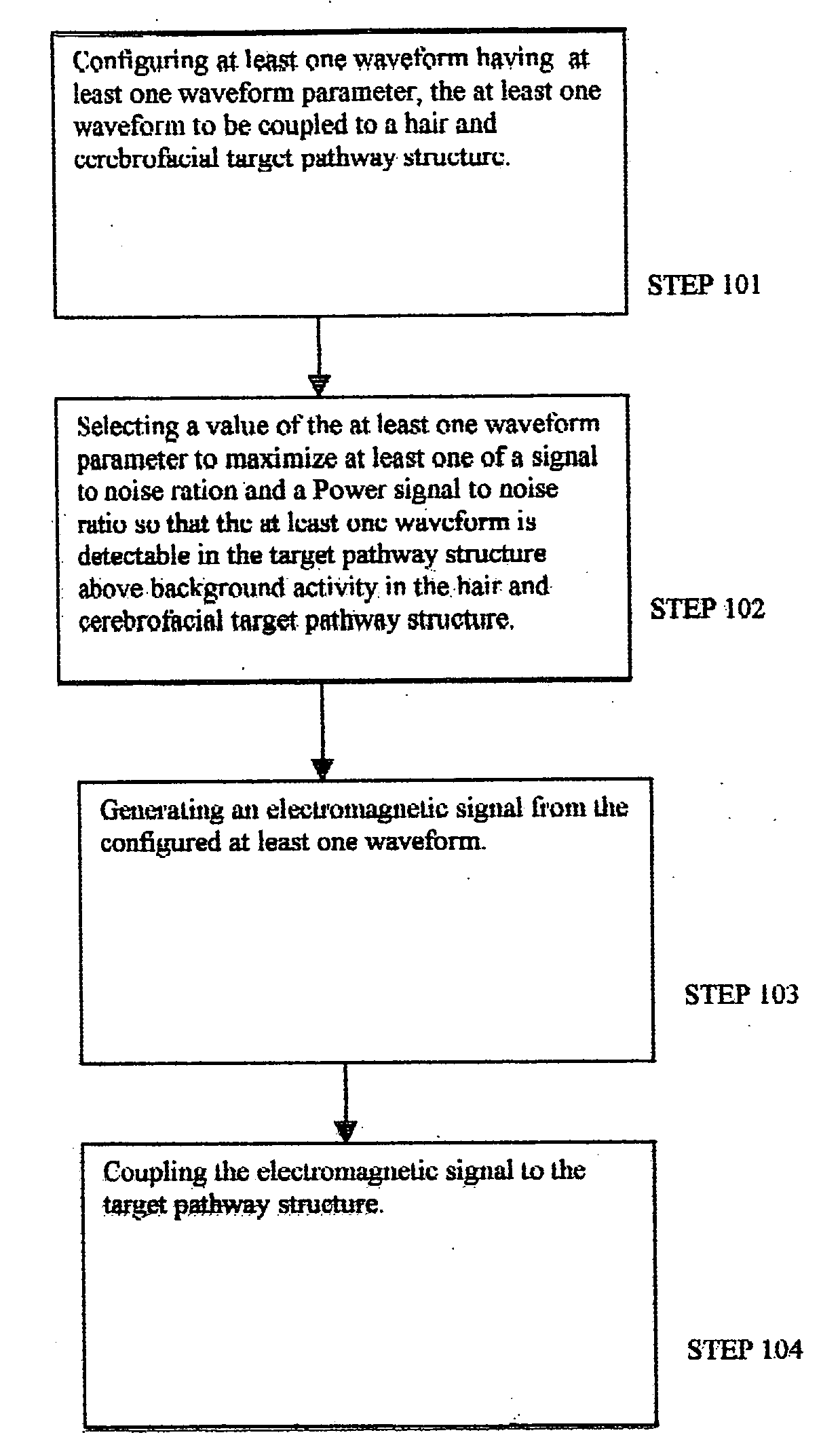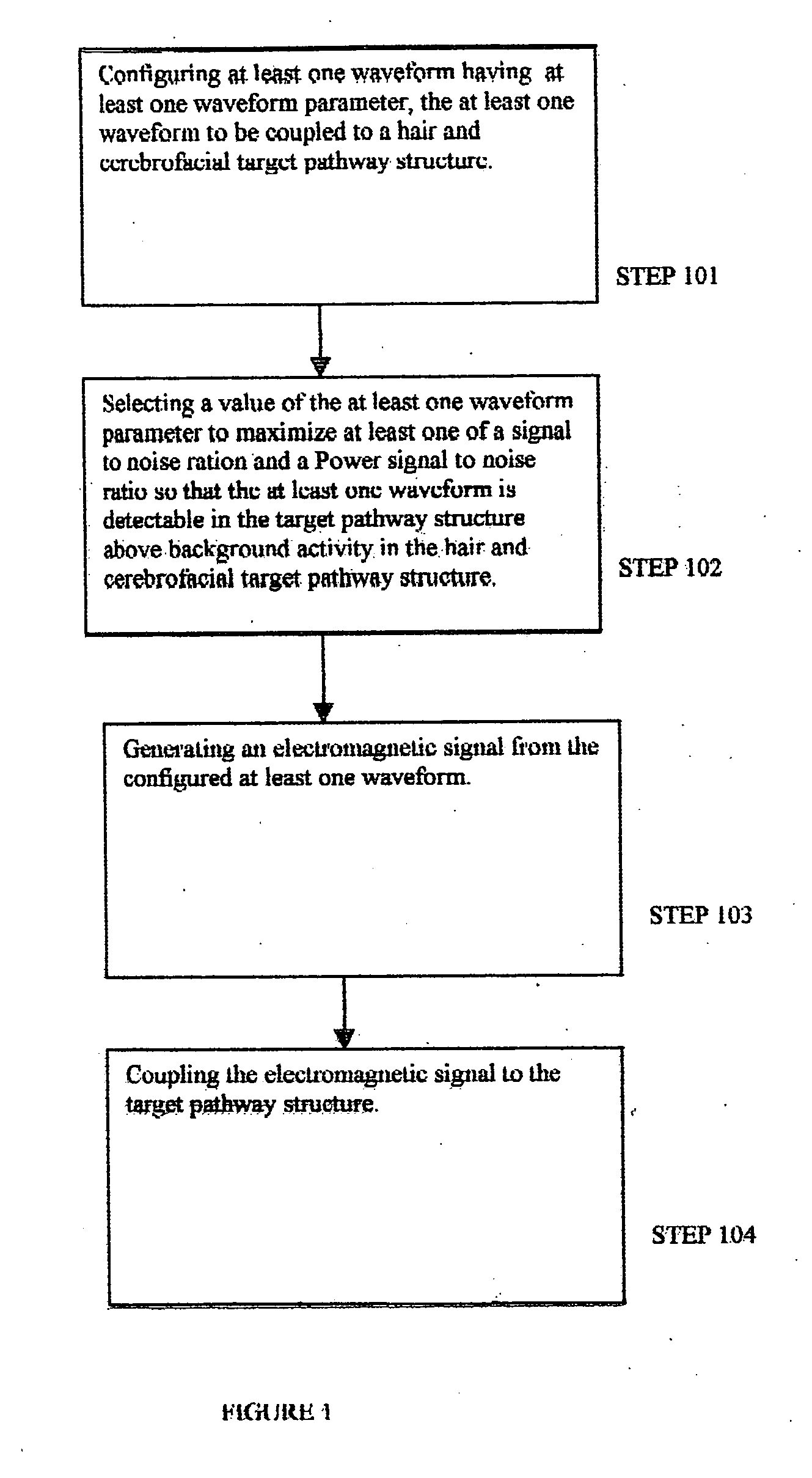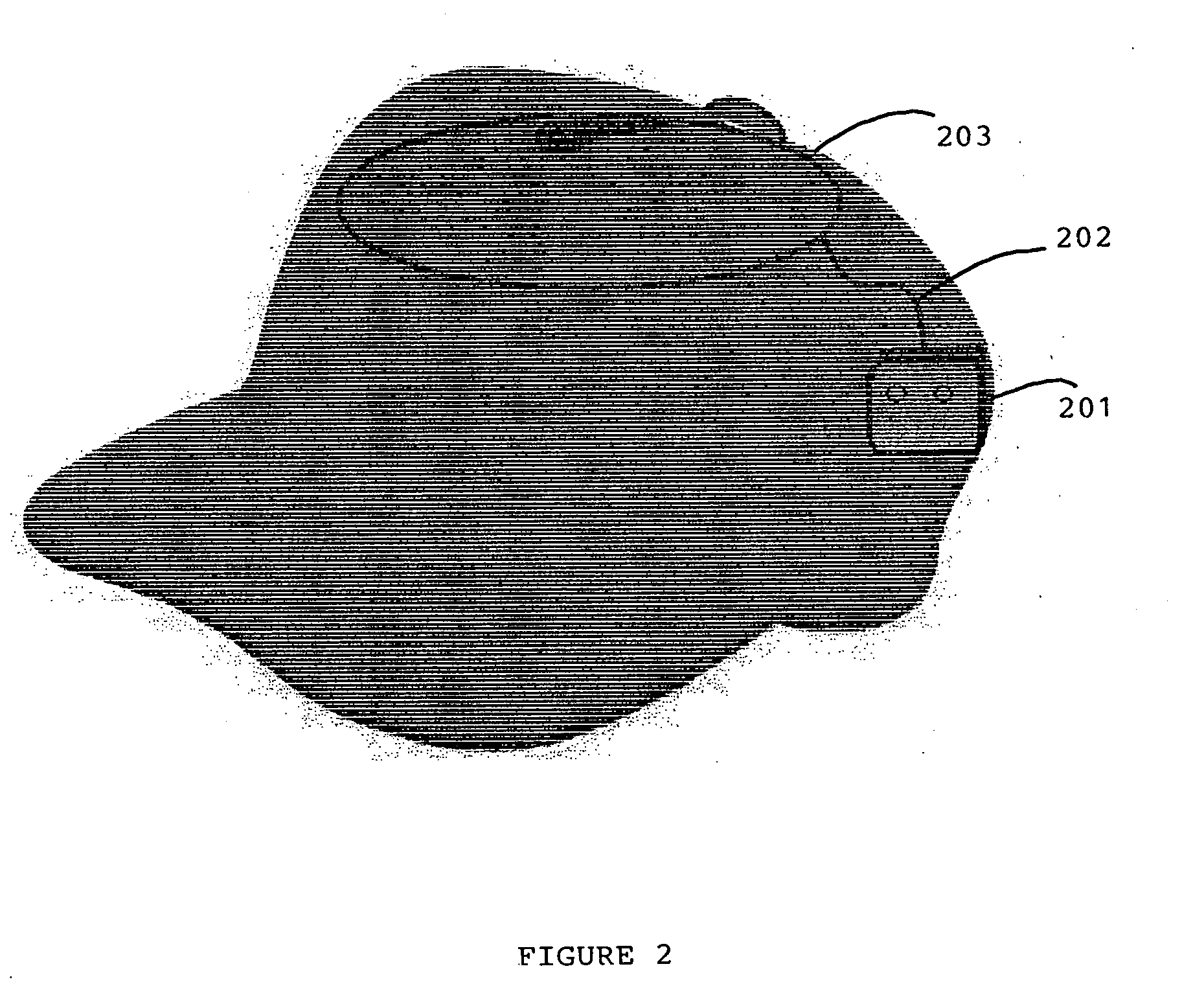Self-contained electromagnetic apparatus for treatment of molecules, cells, tissues, and organs within a cerebrofacial area and method for using same
a technology of electromagnetic apparatus and cerebrofacial area, which is applied in the direction of electrotherapy, magnetotherapy using coils/electromagnets, electrotherapy, etc., can solve the problems of inefficient prior art waveforms, insufficient configuration of waveforms, and inability to take into account the dielectric properties of tissue structure as opposed to the properties of isolated cells, etc., to achieve short pulse duration, modulation of angiogenesis and neovascularization, and low peak ampli
- Summary
- Abstract
- Description
- Claims
- Application Information
AI Technical Summary
Benefits of technology
Problems solved by technology
Method used
Image
Examples
example 1
[0071] The Power SNR approach for PMF signal configuration has been tested experimentally on calcium dependent myosin phosphorylation in a standard enzyme assay. The cell-free reaction mixture was chosen for phosphorylation rate to be linear in time for several minutes, and for sub-saturation Ca2+ concentration. This opens the biological window for Ca2+ / CaM to be EMF-sensitive. This system is not responsive to PMF at levels utilized in this study if Ca2+ is at saturation levels with respect to CaM, and reaction is not slowed to a minute time range. Experiments were performed using myosin light chain (“MLC”) and myosin light chain kinase (“MLCK”) isolated from turkey gizzard. A reaction mixture consisted of a basic solution containing 40 mM Hepes buffer, pH 7.0; 0.5 mM magnesium acetate; 1 mg / ml bovine serum albumin, 0.1% (w / v) Tween 80; and 1 mM EGTA12. Free Ca2+ was varied in the 1-7 μM range. Once Ca2+ buffering was established, freshly prepared 70 nM CaM, 160 nM MLC and 2 nM MLCK...
example 2
[0075] According to an embodiment of the present invention use of a Power SNR model was further verified in an in vivo wound repair model. A rat wound model has been well characterized both biomechanically and biochemically, and was used in this study. Healthy, young adult male Sprague Dawley rats weighing more than 300 grams were utilized.
[0076] The animals were anesthetized with an intraperitoneal dose of Ketamine 75 mg / kg and Medetomidine 0.5 mg / kg. After adequate anesthesia had been achieved, the dorsum was shaved, prepped with a dilute betadine / alcohol solution, and draped using sterile technique. Using a #10 scalpel, an 8-cm linear incision was performed through the skin down to the fascia on the dorsum of each rat. The wound edges were bluntly dissected to break any remaining dermal fibers, leaving an open wound approximately 4 cm in diameter. Hemostasis was obtained with applied pressure to avoid any damage to the skin edges. The skin edges were then closed with a 4-0 Ethil...
example 3
[0081] This example illustrates the effects of PRF electromagnetic fields chosen via the Power SNR method on neurons in culture.
[0082] Primary cultures were established from embryonic days 15-16 rodent mesencephalon. This area is dissected, dissociated into single cells by mechanical trituration, and cells are plated in either defined medium or medium with serum. Cells are typically treated after 6 days of culture, when neurons have matured and developed mechanisms that render them vulnerable to biologically relevant toxins. After treatment, conditioned media is collected. Enzyme linked immunosorbent assays (“ELISAs”) for growth factors such as Fibroblast Growth Factor beta (“FGFb”) are used to quantify their release into the medium. Dopaminergic neurons are identified with an antibody to tyrosine hydroxylase (“TH”), an enzyme that converts the amino acid tyrosine to L-dopa, the precursor of dopamine, since dopaminergic neurons are the only cells that produce this enzyme in this sy...
PUM
 Login to View More
Login to View More Abstract
Description
Claims
Application Information
 Login to View More
Login to View More - R&D
- Intellectual Property
- Life Sciences
- Materials
- Tech Scout
- Unparalleled Data Quality
- Higher Quality Content
- 60% Fewer Hallucinations
Browse by: Latest US Patents, China's latest patents, Technical Efficacy Thesaurus, Application Domain, Technology Topic, Popular Technical Reports.
© 2025 PatSnap. All rights reserved.Legal|Privacy policy|Modern Slavery Act Transparency Statement|Sitemap|About US| Contact US: help@patsnap.com



